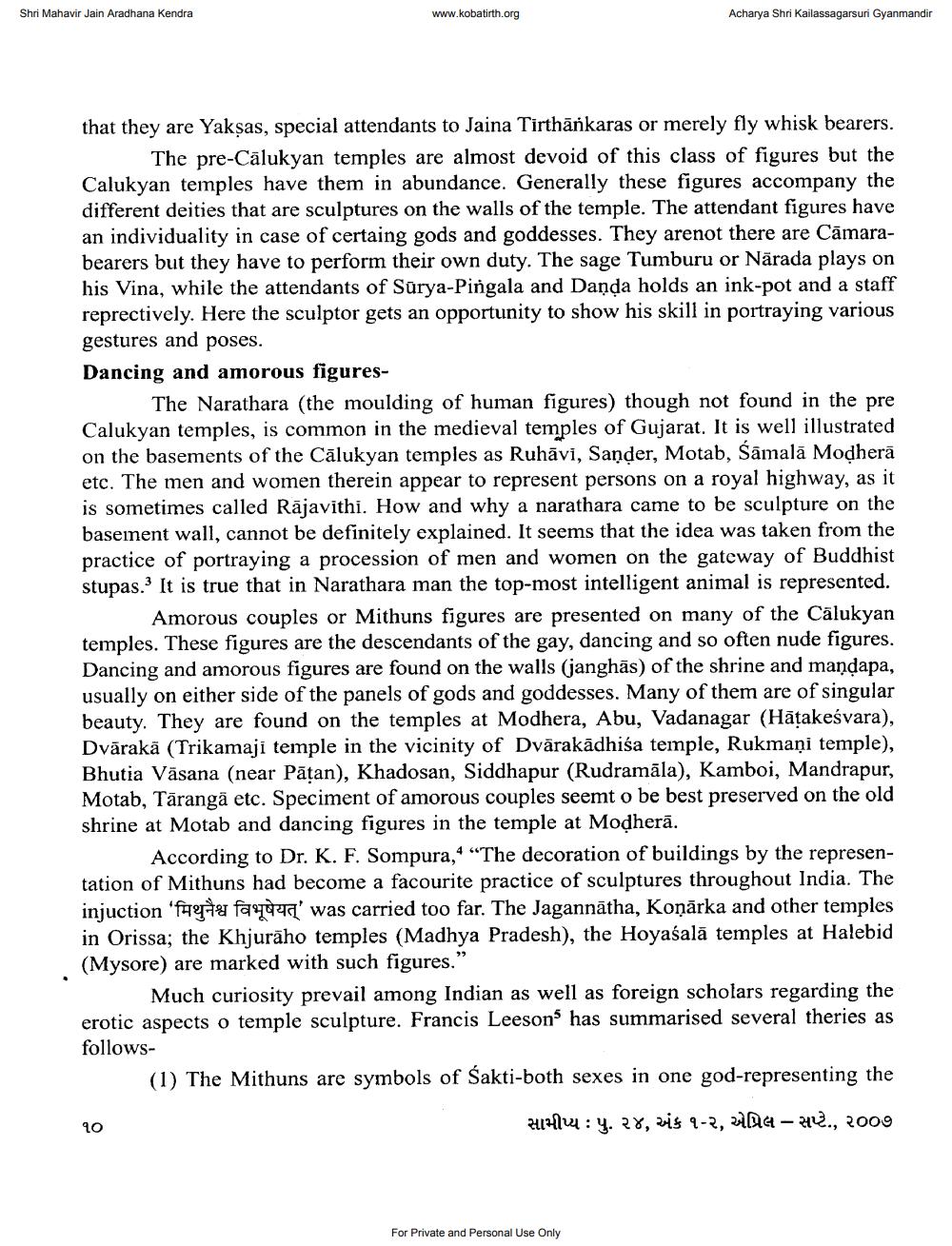________________
Shri Mahavir Jain Aradhana Kendra
www.kobatirth.org
Acharya Shri Kailassagarsuri Gyanmandir
that they are Yakșas, special attendants to Jaina Tirthārkaras or merely fly whisk bearers.
The pre-Cālukyan temples are almost devoid of this class of figures but the Calukyan temples have them in abundance. Generally these figures accompany the different deities that are sculptures on the walls of the temple. The attendant figures have an individuality in case of certaing gods and goddesses. They arenot there are Cāmarabearers but they have to perform their own duty. The sage Tumburu or Närada plays on his Vina, while the attendants of Sūrya-Pingala and Daņda holds an ink-pot and a staff reprectively. Here the sculptor gets an opportunity to show his skill in portraying various gestures and poses. Dancing and amorous figures
The Narathara (the moulding of human figures) though not found in the pre Calukyan temples, is common in the medieval temples of Gujarat. It is well illustrated on the basements of the Cālukyan temples as Ruhāvi, Sander, Motab, Śāmalā Modherā etc. The men and women therein appear to represent persons on a royal highway, as it is sometimes called Rājavithi. How and why a narathara came to be sculpture on the basement wall, cannot be definitely explained. It seems that the idea was taken from the practice of portraying a procession of men and women on the gateway of Buddhist stupas. It is true that in Narathara man the top-most intelligent animal is represented.
Amorous couples or Mithuns figures are presented on many of the Cālukyan temples. These figures are the descendants of the gay, dancing and so often nude figures. Dancing and amorous figures are found on the walls (janghās) of the shrine and mandapa, usually on either side of the panels of gods and goddesses. Many of them are of singular beauty. They are found on the temples at Modhera, Abu, Vadanagar (Hāțakeśvara), Dvārakä (Trikamaji temple in the vicinity of Dvärakādhisa temple, Rukmaņi temple), Bhutia Väsana (near Pātan), Khadosan, Siddhapur (Rudramāla), Kamboi, Mandrapur, Motab, Tārangā etc. Speciment of amorous couples seemt o be best preserved on the old shrine at Motab and dancing figures in the temple at Modherā.
According to Dr. K. F. Sompura, 4 “The decoration of buildings by the representation of Mithuns had become a facourite practice of sculptures throughout India. The injuction 'fhehu faqa' was carried too far. The Jagannātha, Koņārka and other temples in Orissa; the Khjurāho temples (Madhya Pradesh), the Hoyaśalā temples at Halebid (Mysore) are marked with such figures.
Much curiosity prevail among Indian as well as foreign scholars regarding the erotic aspects o temple sculpture. Francis Leeson has summarised several theries as follows
(1) The Mithuns are symbols of Śakti-both sexes in one god-representing the
90
24H/24: Y. 28, 239-2, 2104 – 2012., 2009
For Private and Personal Use Only




